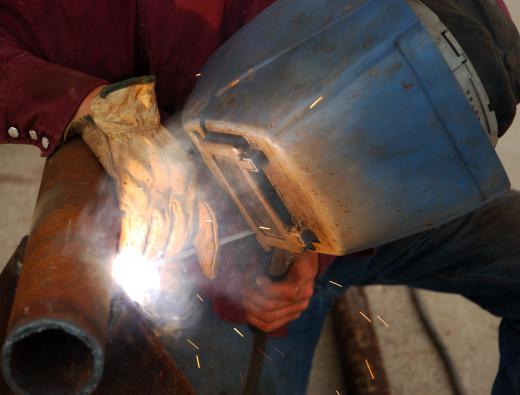Gas tungsten arc welding is a type of arc welding that uses a non-eroding electrical conductor made of tungsten. It is usually more difficult to master than other types of arc welding, but it produces the best weld bead of all types of welding. Tungsten arc welding is typically used on thin metals and non-ferrous metals, including stainless steel and aluminum. It requires a shielding gas, typically argon, and a filler rod — specifically designed for the product being welded — to complete a weld bead. This type of welding is sometimes referred to as tungsten inert gas (TIG) welding.
By using a non-eroding electrode, gas tungsten arc welding creates a cleaner weld with fewer contaminates than other forms of welding. This makes gas tungsten arc welding superior when welding softer and more pure metals, such as aluminum. The welding process is made possible through the use of the inert gas to shield the weld from contaminates in the air as the weld cools. Early gas tungsten arc welding was hindered by the over-heating of the tungsten electrode. The development of a water-cooled electrode soon changed the process and the eventual creation of the alternating current welder eliminated any problems with gas tungsten arc welding, even on aluminum materials.

In gas tungsten arc welding, the operator strikes an arc with the electrode, commonly referred to as the torch, and begins to make a circular motion creating the weld pool. The operator then begins to dip the filler rod into the weld puddle to make a weld bead. As the bead is formed, the operator pulls the filler rod away from the arc while keeping it within the cover of the shielding gas. Failure to keep the rod within the gas would result in oxidation forming on the rod and contaminating the weld. The operator continues to repeat this process until the end of the bead is reached where the operator typically reduces the heat of the torch to avoid leaving a crater at the end of the weld from an over-sized weld puddle.

Unlike most forms of welding, gas tungsten arc welding does not produce smoke. This creates a much more bright and intense light from the arc. Protective eye wear should always be worn while welding. Protective gloves and arm protection should also be worn to protect against ultra-violet rays that can cause injury to the skin, including skin cancer. The high heat and the use of shielding gases can also cut down the amount of available oxygen in the area, resulting in asphyxiation to the operator.
